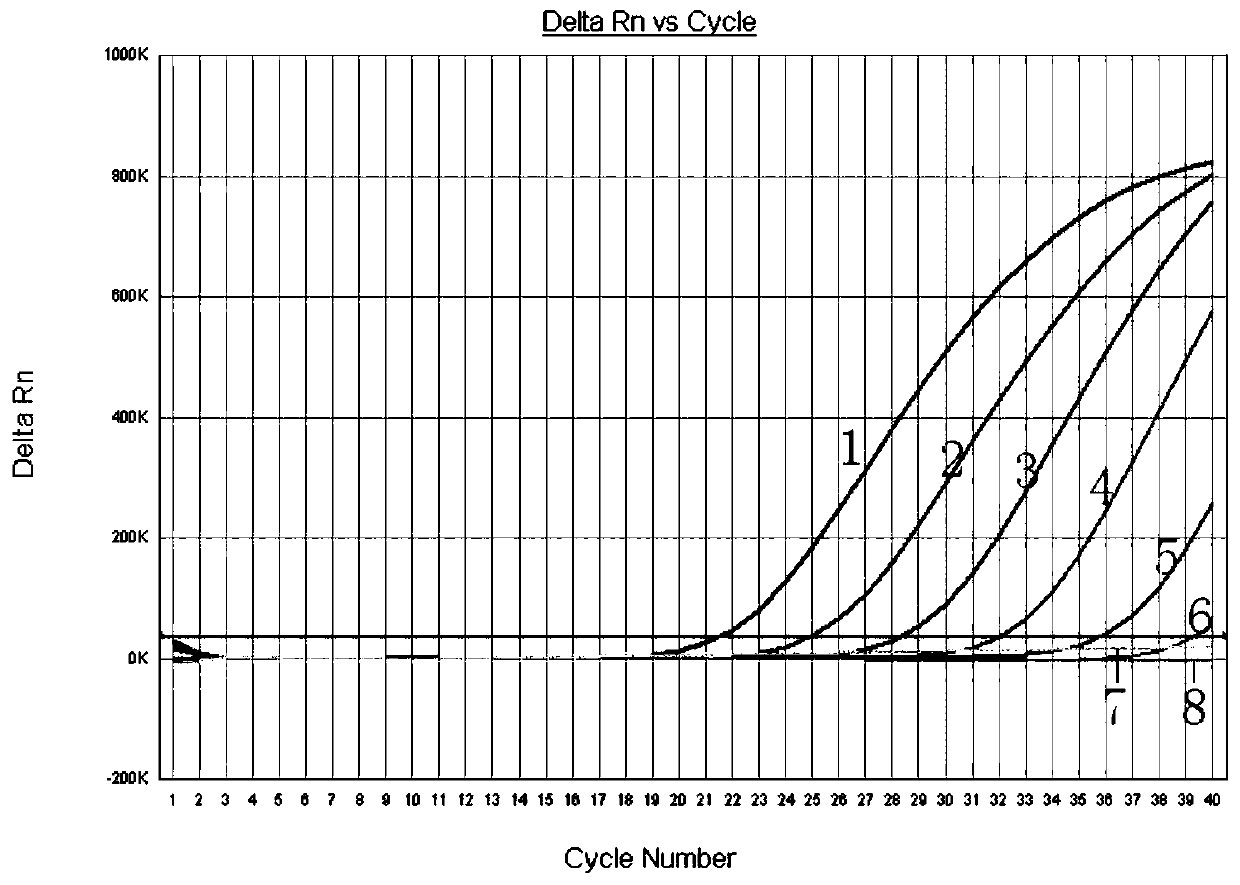Reagents, methods and applications for detection of highly pathogenic h7 avian influenza virus
An avian influenza virus, highly pathogenic technology, applied in the direction of microbial-based methods, biochemical equipment and methods, microbial measurement/testing, etc., can solve the problem of H7 avian influenza virus highly pathogenic strains and low pathogenicity To achieve the effect of protecting health and life safety and reducing economic losses
- Summary
- Abstract
- Description
- Claims
- Application Information
AI Technical Summary
Problems solved by technology
Method used
Image
Examples
Embodiment 1
[0034] In this case, a specific detection probe was designed based on the specific recognition sequence of the highly pathogenic H7 avian influenza virus sequence shown in Seq ID No.1, and real-time fluorescent RT-PCR detection was performed on the highly pathogenic H7 avian influenza virus. as follows.
[0035] (1) Extraction of sample RNA
[0036] In this example, H1 subtype avian influenza virus, H3 subtype avian influenza virus, H4 subtype avian influenza virus, H5 subtype avian influenza virus, H6 subtype avian influenza virus, H8 subtype avian influenza virus, H9 subtype were extracted respectively. Avian influenza virus, H11 subtype avian influenza virus, highly pathogenic H7 subtype avian influenza virus, low pathogenic H7 subtype avian influenza virus, Newcastle disease virus, chicken infectious bronchitis virus, chicken infectious laryngotracheitis RNA from viruses and reoviruses were tested. All virus samples were provided by South China Agricultural University. ...
Embodiment 2
[0057] In this example, on the basis of Example 1, a specific amplification primer pair is designed according to the highly pathogenic H7 avian influenza virus specific recognition sequence of the sequence shown in Seq ID No.1, and the upstream primer is the sequence shown in Seq ID No.5 , the downstream primer is the sequence shown in SeqID No.6, and an H7 avian influenza virus probe is designed in addition, the sequence shown in Seq ID No.7;
[0058] Seq ID No.5: 5'-CCAAAGAGAAAACGGACTGCG-3'
[0059] Seq ID No. 6: 5'-CCATACCAACCATCAATTAGGCC-3'.
[0060] Seq ID No.7: 5'(FAM)-GGCCTATTTGGTGCTATAGCGGGTT-(BHQ1)3'
[0061] It should be noted that the upstream primer of the sequence shown in Seq ID No.5 is designed for the specific recognition sequence of highly pathogenic H7 avian influenza virus, that is, the upstream primer of the sequence shown in Seq ID No.5 contains Seq The sequence shown in ID No.1 can ensure the specificity of amplification; as for the downstream primers a...
PUM
 Login to View More
Login to View More Abstract
Description
Claims
Application Information
 Login to View More
Login to View More - R&D
- Intellectual Property
- Life Sciences
- Materials
- Tech Scout
- Unparalleled Data Quality
- Higher Quality Content
- 60% Fewer Hallucinations
Browse by: Latest US Patents, China's latest patents, Technical Efficacy Thesaurus, Application Domain, Technology Topic, Popular Technical Reports.
© 2025 PatSnap. All rights reserved.Legal|Privacy policy|Modern Slavery Act Transparency Statement|Sitemap|About US| Contact US: help@patsnap.com


